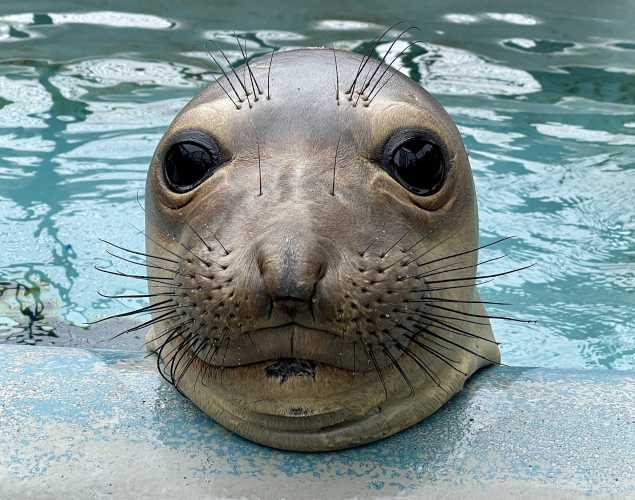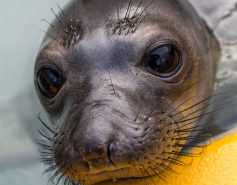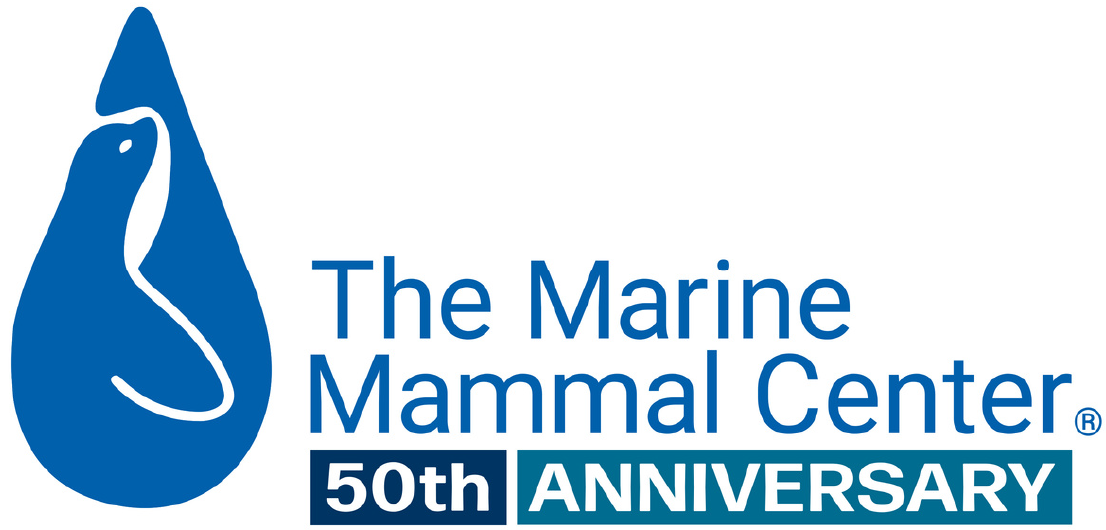
Acute-Phase Responses in Healthy, Malnourished and Lungworm-Infected Juvenile Northern Elephant Seals
- Lungworm
Abstract
Acute-phase proteins (APPs) are utilized to detect early inflammation in many domestic and nondomestic species, but variability exists between species and inflammatory diseases as to which APPs are most useful. Stranded juvenile northern elephant seals (NESs; Mirounga angustirostris) undergoing rehabilitation at the Marine Mammal Center experience high mortality rates due to severe arteritis caused by the lungworm, Otostrongylus circumlitis (OC), and there are currently no effective antemortem diagnostic tools for this disease. To characterize patterns of the acute-phase response in the NES, two APPs-serum amyloid A (SAA) and C-reactive protein (CRP)-were measured, and serum protein electrophoresis was performed to measure albumin and globulin fractions in 81 serum samples from 58 NESs in four different health states: healthy, malnourished, preclinical for OC infection, or clinical for OC infection. Compared to healthy NESs (median, 11.2 mg/L), SAA concentrations were significantly increased in malnourished (33.9 mg/L), preclinical (247 mg/L), and clinical OC-infected NESs (328 mg/L) (P < 0.05). CRP concentrations were increased only in clinical OC-infected NESs (median, 53.9 mg/L) and were below detectable limits in the other three groups (<0.01 mg/L). These results show that SAA and CRP are positive APPs in NESs with OC infection, and that SAA may serve as the major APP for this species. Albumin : globulin ratios were significantly increased in malnourished NESs (median, 1.26) and decreased in clinical OC-infected NESs (0.53). As a result, albumin is a negative APP in the NES, similar to other mammalian species. APP monitoring can be helpful in detecting and monitoring inflammation in rehabilitating juvenile NESs.
Sheldon, J.D., Johnson, S.P., Hernandez, J.A., Cray, C., Stacy, N.I. 2017. Acute-phase responses in healthy, malnourished, and otostongylus-infected juvenile Northern elephant seals (Mirounga angustirostris). Journal of Zoo and Wildlife Medicine. 48(3): 767-775.
Related Publications
{"image":"\/Animals\/Patients\/California sea lions\/csl-by-bill-hunnewell-c-the-marine-mammal-center-1.jpg","alt":"California sea lion eating a fish","title":"New Technique for Diagnosing Lung Parasite Infections in Sea Lions","link_url":"https:\/\/www.marinemammalcenter.org\/publications\/new-technique-for-diagnosing-lung-parasite-infections-in-sea-lions","label":"Research Paper"}

{"image":"\/Animals\/Patients\/Elephant seals\/cropped-images\/es-by-bill-hunnewell-c-the-marine-mammal-center-3-2-1214-3454-3512-1600891002.jpg","alt":"northern elephant seal","title":"Diagnostic Tests for Lungworm-Infected Northern Elephant Seals","link_url":"https:\/\/www.marinemammalcenter.org\/publications\/diagnostic-tests-for-lungworm-infected-northern-elephant-seals","label":"Research Paper"}

{"image":"\/Animals\/Wild\/Humpback whale\/cropped-images\/humpback-whale-sea-lions-photo-c-bill-hunnewell-190-2-2774-2167-1659123832.jpg","alt":"humpback whales and California sea lions feeding","title":"Aquatic Mammals","link_url":"https:\/\/www.marinemammalcenter.org\/publications\/aquatic-mammals","label":"Research Paper"}

{"image":"\/Animals\/Patients\/Guadalupe fur seals\/2021\/cropped-images\/gfs-skyrocket-by-bill-hunnewell-c-the-marine-mammal-center-noaa-permit-18786-2-112-1667-1302-1625765450.jpg","alt":"Guadalupe fur seal Skyrocket","title":"Vasculitis and Thrombosis due to the Sea Lion Lungworm in a Guadalupe Fur Seal","link_url":"https:\/\/www.marinemammalcenter.org\/publications\/vasculitis-and-thrombosis-due-to-the-sea-lion-lungworm-in-a-guadalupe-fur-seal","label":"Research Paper"}

Vasculitis and Thrombosis due to the Sea Lion Lungworm in a Guadalupe Fur Seal
Read MoreRecent News
{"image":"\/Animals\/Patients\/Harbor seals\/2020\/cropped-images\/hs-barnwood-by-bill-hunnewell-c-the-marine-mammal-center-315-0-3299-2577-1607370547.jpg","alt":"harbor seal Barnwood","title":"Last-Minute Gift Guide \u2013 Top Gifts that Give Back to Marine Animals","link_url":"https:\/\/www.marinemammalcenter.org\/news\/last-minute-gift-guide","label":"News Update","date":"2025-12-18 01:00:00"}

Last-Minute Gift Guide – Top Gifts that Give Back to Marine Animals
December 18, 2025
Read More{"image":"\/Animals\/Patients\/Hawaiian monk seals\/2025\/cropped-images\/b-ru72admission-to-ke-kai-ola112125photo-c-the-marine-mammal-center-noaa-permit-24359-0-364-1270-992-1766095407.jpg","alt":"A newborn Hawaiian monk seal pup with a black coat in rehabilitative care.","title":"Newborn Hawaiian Monk Seal Pup Now Receiving Care","link_url":"https:\/\/www.marinemammalcenter.org\/news\/newborn-hawaiian-monk-seal-pup-now-receiving-care","label":"Patient Update","date":"2025-12-18 01:00:00"}

{"image":"\/Animals\/Patients\/Hawaiian monk seals\/2025\/cropped-images\/d-ru28release-exam-at-ke-kai-ola111025photo-by-giancarlo-rulli-c-the-marine-mammal-center-noaa-permit-24359-0-0-1270-992-1764620886.jpg","alt":"","title":"Bird Flu Vaccine Trial Offers Hope for Protecting Hawaiian Monk Seals","link_url":"https:\/\/www.marinemammalcenter.org\/news\/bird-flu-vaccine-trial-may-offer-hope-for-protecting-hawaiian-monk-seals","label":"News Update","date":"2025-12-01 08:13:00"}

Bird Flu Vaccine Trial Offers Hope for Protecting Hawaiian Monk Seals
December 1, 2025
Read More{"image":"\/Animals\/Patients\/Hawaiian monk seals\/2021\/hms-pp08-by-sheila-latta-c-the-marine-mammal-center-noaa-permit-18786.jpg","alt":"Hawaiian monk seal","title":"The New York Times: Inside the Bird-Flu Vaccine Trial for Monk Seals","link_url":"https:\/\/www.marinemammalcenter.org\/news\/the-new-york-times-inside-the-bird-flu-vaccine-trial-for-monk-seals","label":"In the News","date":"2025-12-01 01:00:00"}

The New York Times: Inside the Bird-Flu Vaccine Trial for Monk Seals
December 1, 2025
Read More